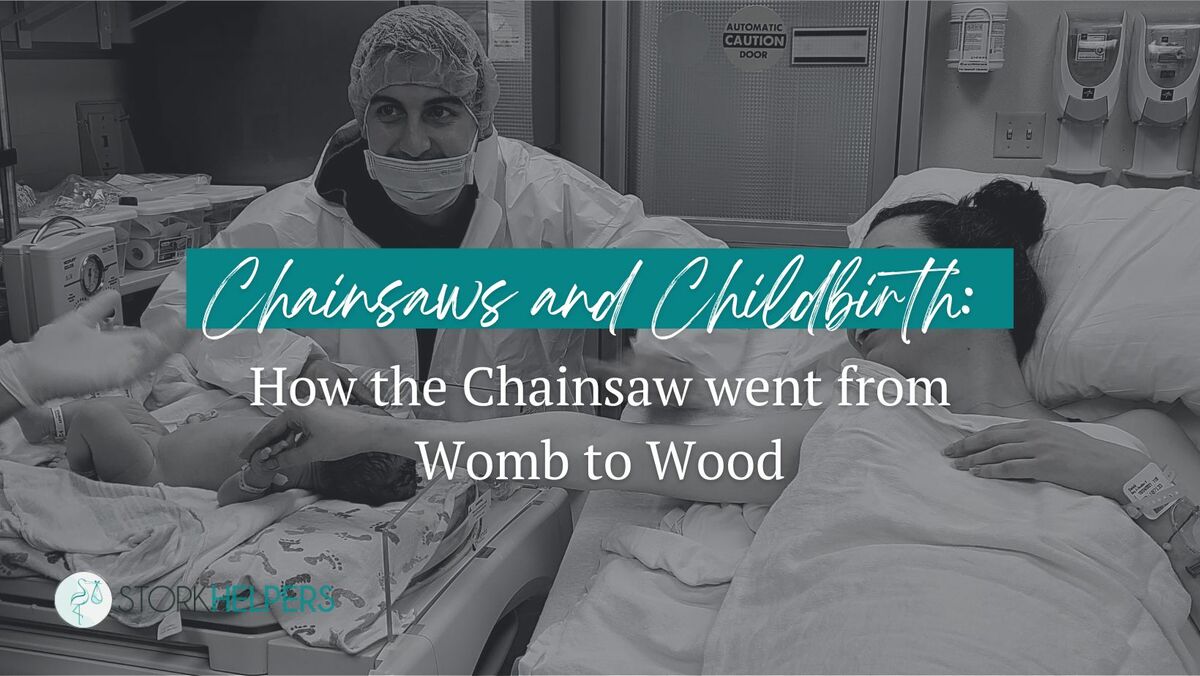Chainsaws and Childbirth: How the Chainsaw went from Womb to Wood

You may not believe it (and we can hardly hold your disbelief against you), but the chainsaw was originally invented for use during childbirth.
No, this is not a Halloween prank to scare you, although the truth is frightening enough to tell around any October campfire.
Before the advent of the modern-day C-Section, all babies had to be delivered via vaginal birth.
There’s just one problem: human babies have huge skulls as compared to the width of the average woman’s birth canal. As a result, childbirth is extremely difficult for the mama and the baby can become stuck mid-birth.
In ages past, when a baby became stuck against the pelvis doctors were forced to remove parts of the bone and cartilage to create a wider passage in the area. As you can imagine, this process can be very difficult for the mother and leaves her with life-long side effects.
This operation was called a symphysiotomy and it was originally performed mid-labor using a small knife. And before you ask, no, anesthesia was not involved. This process was very messy and painful (really, really painful) but it was the 1700’s and doctors had no other option.
That’s where the chainsaw came in.
In 1780, two doctors named John Aitken and James Jeffrey living in Scotland invented the first chainsaw to make the removal of pelvic bone quicker and easier.
This first chainsaw was much smaller than the noisy, sword-sized machine we see today. About the size of a butter knife, this archaic chainsaw was powered by a hand crank that controlled the speed of a sharp-toothed chain.
Despite the terror that thought might invoke in you, the truth is that this proto chainsaw saved many lives due to its speedy operation and clean, precise cuts.
The chainsaw made an operation that was once time-consuming, bloody, and highly deadly for both mama and baby, into a quicker, cleaner, and all-around more reliable form of child delivery.
Though we shudder at the thought of a chainsaw in modern-child birth, the truth is that the chainsaw was a huge step towards reducing birth-related mortality rates.
Not only that, but the chainsaw was one of the first steps in developing the modern C-Section, an effective option for childbirth that circumvents many of the risks associated with traditional vaginal delivery.
Once the success of the chainsaw was apparent, people began to innovate and found uses for it outside of childbirth.
Doctors soon began to use it during other types of surgeries and operations and soon the chainsaw found its way into the world of woodworking.
Over time, the chainsaw became bigger, more powerful, and engine-powered.
Symphysiotomies are no longer performed, except in extremely rare cases or in developing countries without access to modern medical resources.
Safer, More Informed Childbirth
Sometimes we have to thank our lucky stars that we were born in the 21st century.
In centuries past, childbirth was a grueling, extremely dangerous experience. It was common that mothers and babies died due to now-preventable causes.
There were many myths and stigmas surrounding birth that kept us ignorant about the safest ways to give birth.
The more we know about childbirth, the safer delivery is for both mama and baby.
One of the best ways to stay informed is through the care of a knowledgeable, experienced doula.
Whether you are having a homebirth or hospital birth, water birth or cesarean, natural birth or a medicated birth, Tamara has personally experienced all of these after being a part of over 120 births as a doula.
Never judging, always by your side. We are your Stork Helpers.
For Cincinnati / Dayton doula support, reach out to Stork Helpers now!

